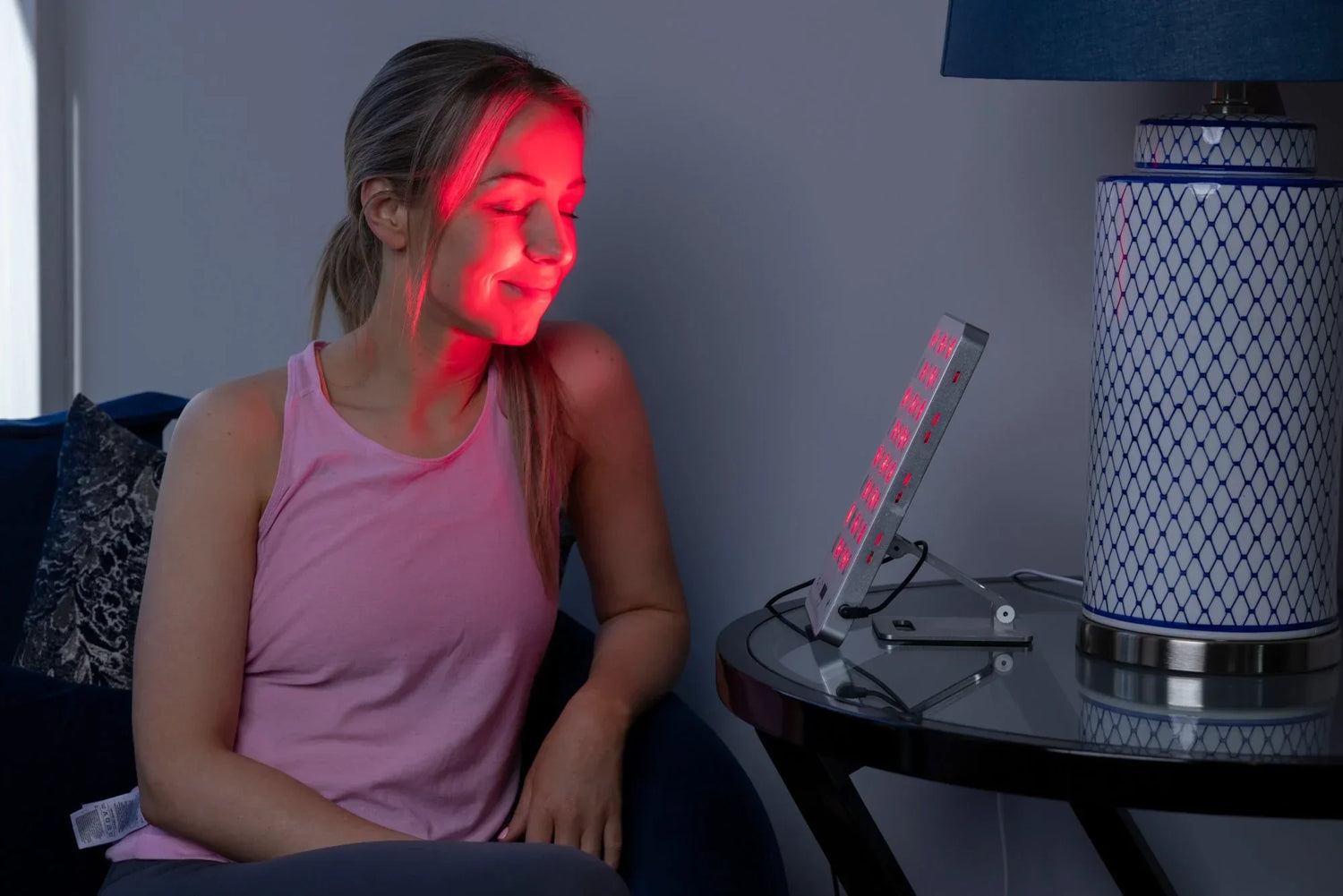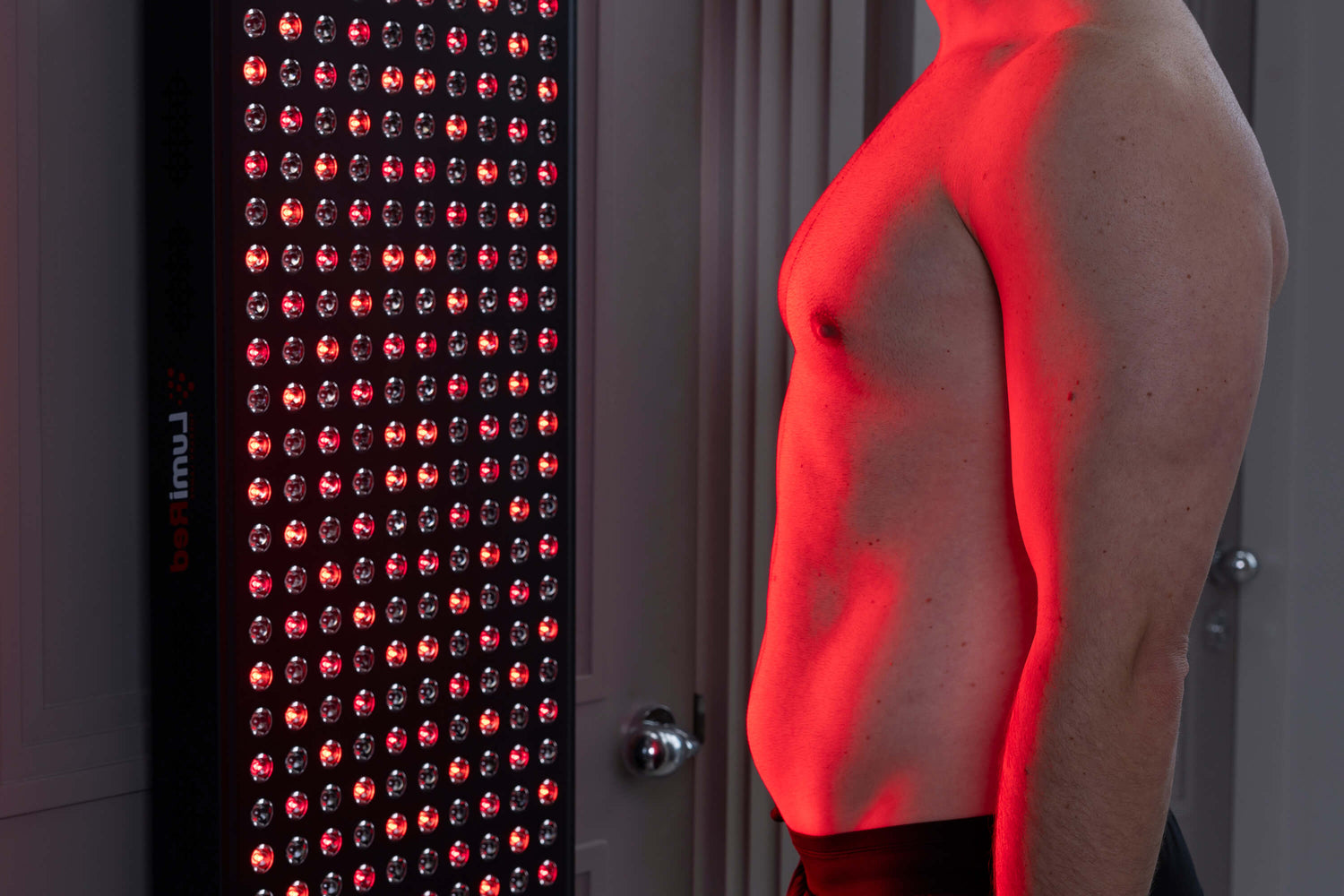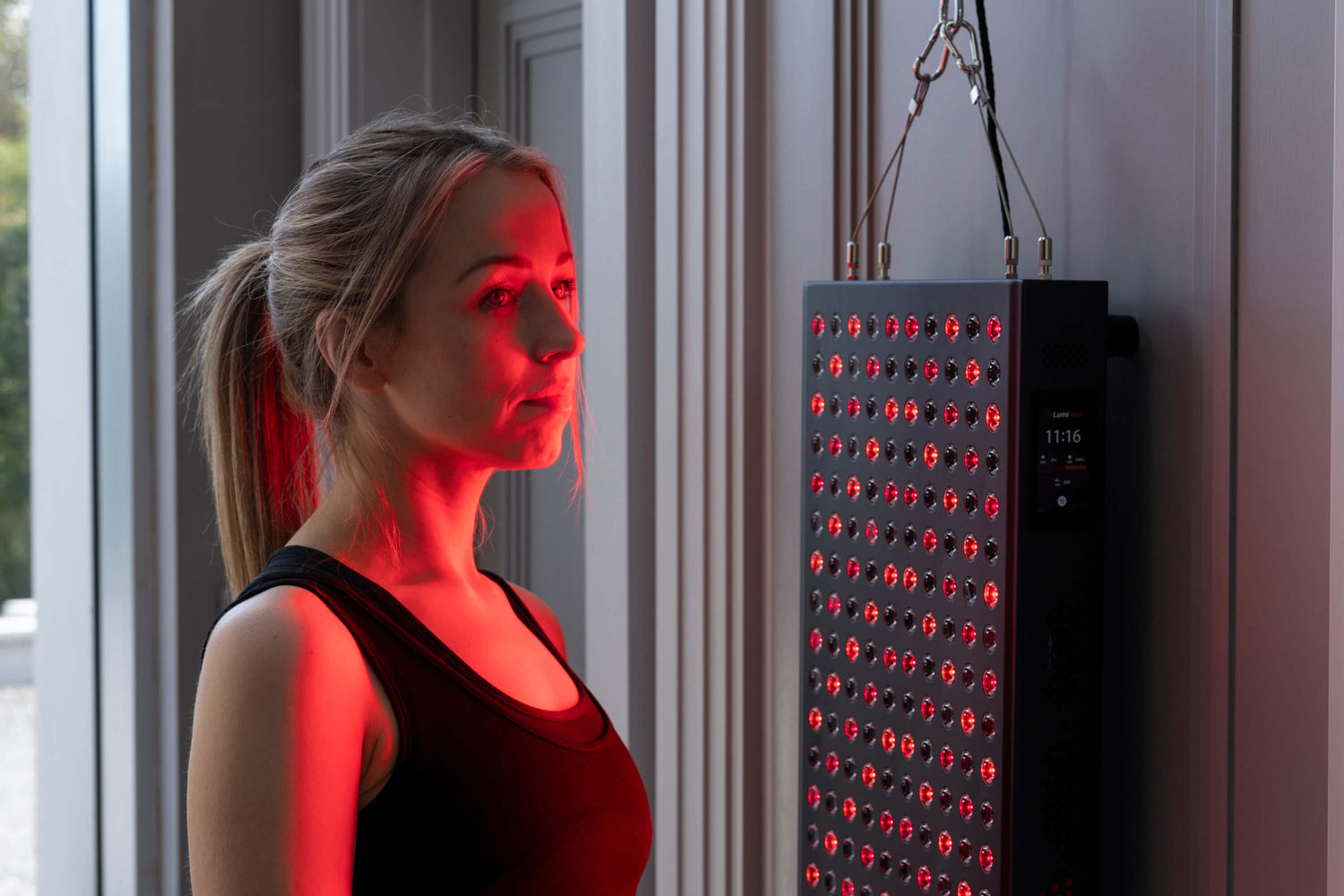In recent years, red light therapy (RLT) has been gaining attraction as an innovative, non-invasive treatment for various health concerns. Although RLT has started becoming popular in skin care and pain therapy, researchers are evaluating its use in improving neurological health. From cognitive abilities to mental health, red light therapy offers a new source of interest in the world of alternative medicine. But what does red light therapy do for your brain, and how can it be beneficial for neurological issues? In this blog, we are going to explore the science, benefits and practical applications of this new technology.
Key Takeaways:
-
Red light therapy boosts cognitive function by stimulating mitochondria and enhancing neural regeneration.
-
It may help with depression and anxiety by increasing serotonin and dopamine levels.
-
Medical-grade red light therapy devices offer deeper penetration for treating neurological conditions.
-
Consistent use is key—short, daily sessions yield the best brain health benefits.
Understanding Red Light Therapy
Red light therapy utilises low-level wavelengths of light that penetrate the skin to improve cellular function. It stimulates the mitochondria, the engine of the cell, to produce more ATP (adenosine triphosphate). Increased energy in the cell supports cellular repair, slows inflammation, and promotes circulation.
Although a lot of people are aware of its importance for skin rejuvenation and muscle recovery, the neurological implications of red light therapy are becoming known. Researchers suggest that light therapy can influence brain function, with potential implications for depression, anxiety, neurodegeneration, and cognitive decline.
What’s fascinating about red light therapy is the ability to improve cell communication, in other words, the efficiency of your neural pathways. If this is the case, it may lead to improved brain function and possibly alleviate brain fog, fatigue, or memory deterioration with age. Unlike a traditional pharmaceutical regimen, which may come with side effects, red light therapy is natural, and it is painless and well-tolerated.
How Red Light Therapy Works on the Brain
Similar to all other cell types, neurons use ATP for function and repair. Red light therapy activates mitochondrial function, which supports neural regeneration through improved blood flow and reduction of oxidative stress. Research indicates that a wavelength of red light (typically ranging from 600–850 nm) penetrates the skull, stimulating the activation of brain cells and supporting the brain's natural capacity for neuroplasticity, or rewiring and adaptation.
Encouraging neuroplasticity is one of the key mechanisms, but it also provides benefits in terms of oxygenation delivery, primarily by controlling nitric oxide build-up in the cells. This facilitates functional and effective neuronal activity and builds, ultimately, the capacity for improving memory, attention and overall brain health.
Additionally, red light therapy has been shown to modulate inflammation, which plays a significant role in many neurological conditions. Chronic inflammation in the brain is linked to disorders such as Alzheimer's and Parkinson's disease. By reducing inflammation, red light therapy may help slow disease progression and improve quality of life.
Potential Neurological Benefits of Red Light Therapy
Cognitive Function and Memory
The initial studies indicate that red light therapy may improve cognitive function and memory recall. By increasing oxygenation and improving ATP production, neurons will be less susceptible to stress, which may slow the effects of ageing on cognition. Therefore, red light therapy may have exciting potential for individuals at risk of dementia or early signs of cognitive decline.
Red Light Therapy for Depression and Anxiety
Mental health disorders, including depression and anxiety, are typically the result of neurochemical imbalances with some combination of reduced oxygenation in the brain. Red light therapy depression research suggests that regular administration may increase levels of serotonin and dopamine—neurotransmitters related to mood.
Increased levels of blood flow to the brain can also support mental clarity and emotional stability after treatment with red light therapy. Only some patients have reported noticeable improvement in mood and emotional wellness with only a few weeks of red light therapy. Unlike the weeks-even months found with an antidepressant, there are relatively few side effects with red light therapy and few negative side effects.

Neurological Disorders and Brain Injury Recovery
Disorders such as traumatic brain injury (TBI), Alzheimer's disease, and Parkinson's disease involve injury and inflammation of the nervous system. Light treatment applied before and after a neurological insult has shown promise in decreasing morbidity and enhancing recovery.
Non-invasive therapies like red light therapy, which has been shown to reduce inflammation and enhance cellular recovery, could be useful for patients suffering from these conditions. Athletes who have suffered concussions or stroke recovery patients could use red light therapy as one part of a comprehensive rehabilitation program to recover from their injuries. In patients recovering from brain injuries, increased ATP production is correlated with faster neuron healing and improved functional outcomes.
Sleep and Circadian Rhythm Regulation
Many people are affected by sleep disorders, whether due to stress, shift work, or neurological imbalance. Red light therapy has been shown to positively influence the production of melatonin, which controls the sleep-wake cycle. Following red light exposure can signal the body that it's time to wind down in the evening and prepare for sleep without meds.
Practical Applications and Usage
For individuals looking for a way to try red light therapy at home, there are many options available, from handheld wands to full-size panels. But how often should you use red light therapy for brain health? Studies show that doing short, regular sessions (10 - 20 minutes per day) is best. The best red light therapy devices use specific wavelengths to allow for maximum penetration and effectiveness.
Medical-grade devices offer the highest intensity and are best for people with more serious neurological conditions. When using a red light therapy device at home, the position of the device is critical. Preferably, the light should be directed at the forehead or scalp,p where there may be better penetration into the tissue of the brain. Users may wear goggles to protect the eyes, although several studies have found evidence that exposing the eyes through the retina may help regulate our mood.
Choosing the Right Red Light Therapy Device
Here are the main things to consider:
-
Wavelength: Go with a device that operates at wavelengths of 600–850 nm, which will offer the best penetration of light into the brain.
-
Intensity: Devices with higher intensity (in mW/cm²) will penetrate deeper and work faster.
-
Medical vs Consumer Devices: If you want to treat a serious neurological condition, you might want to select a medical-grade red light therapy device vs consumer grade, which might be more effective than a consumer device.
-
Usability: When choosing a device, portability, timers, and coverage will factor into ease of use.
Red Light Therapy Before and After Results and Expectations
The effects of red light therapy may differ from before and after use due to variances in individual conditions and adherence. Participants in studies often reported improvements in mood and clarity either immediately or noticed this improvement took place after weeks or months.
Cumulatively, clinical studies suggest exposure equals better outcomes for the best chance of improvement, particularly when using the therapy in neurodegenerative disorders. Anecdotal observations from individuals who are using red light therapy for cognitive enhancement reported outcomes such as clearer thinking, productivity, and reduction in brain fog. These findings agree with research supporting ATP enhancement and the role ATP has in keeping the brain functioning optimal.
Safety and Considerations
One might ask: Are red lights bad for your brain? The answer is no. Red light therapy is non-invasive and comes with very little risk. Nevertheless, too much exposure could create temporary headaches and/or eye strain. Always stick to the manufactured guidelines provided with your red light, and consult a healthcare professional if you have any existing medical conditions.
In addition, if you're someone who has light sensitivity or prior seizures, you'll want to speak with a physician prior to beginning red light therapy. Although rare, too much exposure to certain wavelengths may be enough to trigger photosensitivity reactions.
Conclusion
Red light therapy is rapidly becoming a transformative option in brain health, with potential positive uses for mental function and mood-related disorders, as well as neurodegenerative illnesses. As research progresses, people are engaging in this non-invasive strategy to rejuvenate brain health and neurological function everywhere. With all of the research that continues to show there is a benefit to red light therapy (RLT), it will not be surprising when it is a standard treatment for neurological conditions.
As science continues to unlock the full potential of red light therapy, its applications in healthcare will likely expand.
Unlock the Potential of Red Light Therapy With LumiRed
Take control of your well-being with LumiRed. It is designed to enhance cognitive function, mood, and recovery. Experience the science-backed benefits of medical-grade red light therapy from the comfort of your home. Try LumiRed today!




